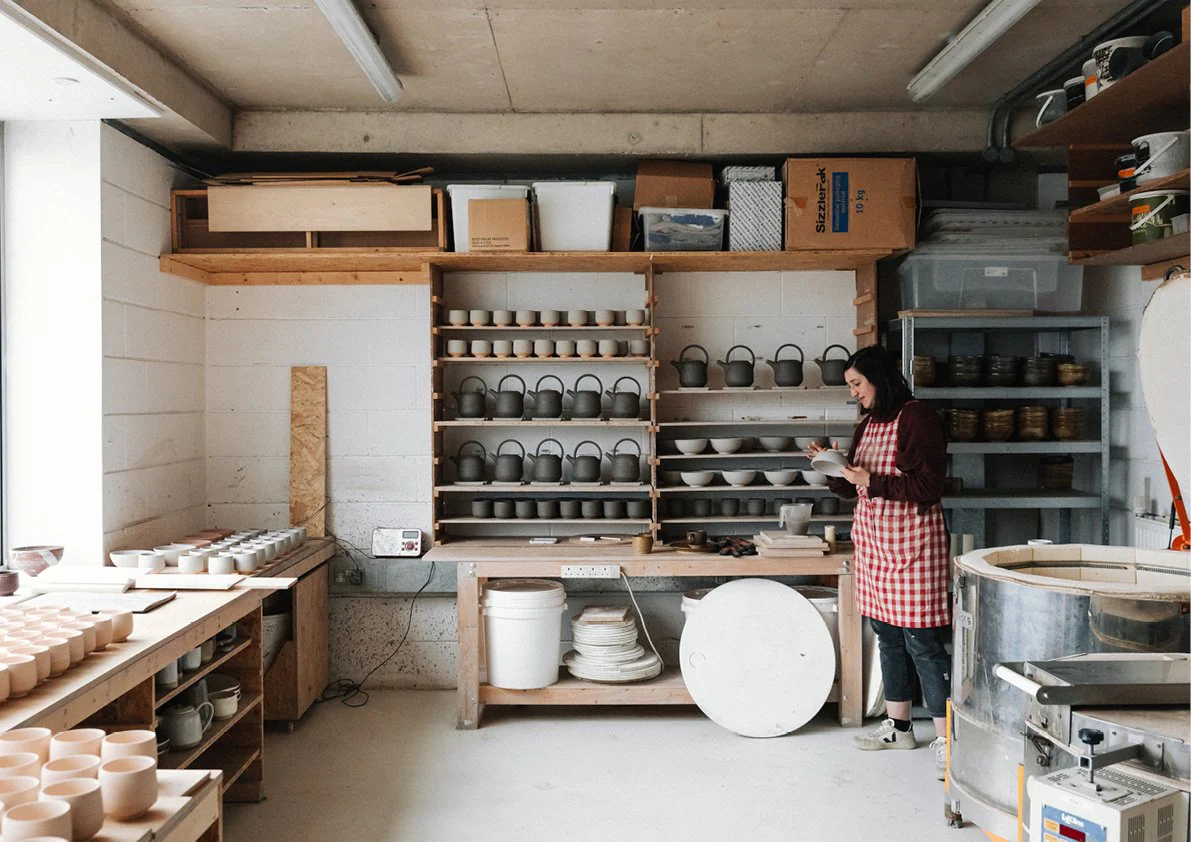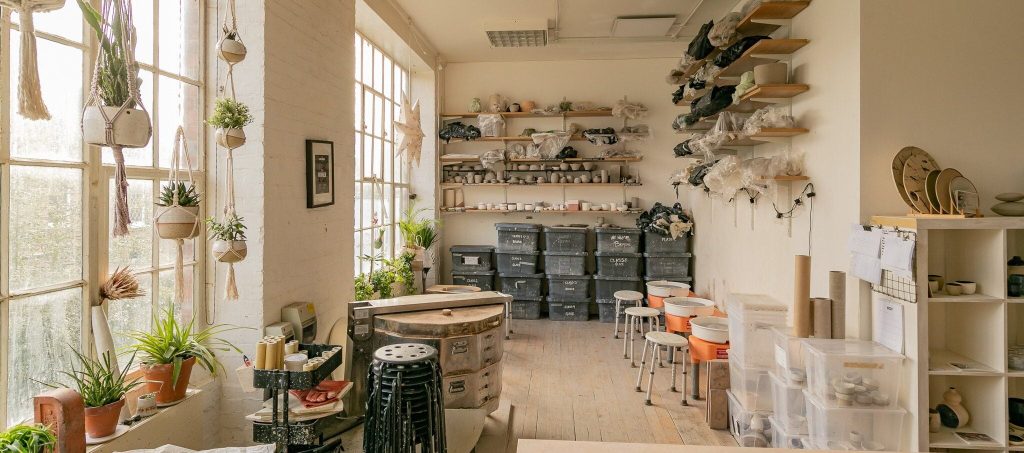Introduction
Welcome to the world of pottery studios, where creativity meets craftsmanship in a serene environment. In this comprehensive guide, we’ll explore everything you need to know about setting up and managing your own pottery studio successfully. From designing your space to attracting customers, we’ll cover it all.

1. Crafting the Perfect Space
Creating a conducive environment for pottery enthusiasts is essential for a successful studio. From choosing the right location to designing the layout, every aspect contributes to the overall experience.
2. Essential Equipment and Tools
Equip your studio with the necessary tools and equipment for pottery making. From kilns to pottery wheels, ensure you have everything needed to facilitate a seamless creative process.
3. Safety Measures and Protocols
Prioritize safety in your pottery studio by implementing proper protocols and safety measures. Provide protective gear, conduct training sessions, and maintain a clean and organized workspace to prevent accidents.
4. Pottery Techniques and Practices
Explore various pottery techniques and practices to expand your skills and inspire your students. From hand-building to wheel-throwing, offer diverse learning opportunities to cater to different interests and skill levels.
5. Marketing Strategies for Success
Effective marketing is key to attracting customers to your pottery studio. Utilize social media, website optimization, and local partnerships to increase visibility and attract potential clients.
6. Building a Community
Foster a sense of community within your pottery studio by organizing events, workshops, and collaborative projects. Encourage interaction and collaboration among members to create a supportive and inspiring environment.
7. Managing Finances and Budgeting
Managing finances is crucial for the sustainability of your pottery studio. Keep track of expenses, set a budget, and explore revenue streams such as classes, memberships, and pottery sales.
8. Sustainable Practices
Embrace sustainable practices in your pottery studio by minimizing waste, conserving resources, and using eco-friendly materials. Educate your community about the importance of sustainability in pottery making.
9. Continuous Learning and Development
Stay updated with the latest trends and techniques in pottery making through continuous learning and development. Attend workshops, conferences, and seminars to expand your knowledge and skills.
10. Customer Satisfaction and Feedback
Prioritize customer satisfaction by providing exceptional service and soliciting feedback from your clients. Use feedback to improve your offerings and enhance the overall experience at your pottery studio.
11. Overcoming Challenges
Navigating challenges is inevitable in any business, including pottery studios. Be prepared to adapt to changes, overcome obstacles, and persevere through tough times to ensure the success of your studio.
12. Expanding Your Reach
Explore opportunities to expand your pottery studio beyond its physical location. Consider offering online classes, selling pottery supplies, or collaborating with other artists to reach a wider audience.
13. Celebrating Successes
Celebrate milestones and successes along the way to keep morale high and motivate yourself and your team. Recognize achievements, whether big or small and take pride in the growth of your pottery studio.

FAQs (Frequently Asked Questions)
How do I choose the right clay for pottery? Choosing the right clay for pottery depends on several factors such as your desired outcome, firing temperature, and personal preference. There are different types of clay available, including earthenware, stoneware, and porcelain. Consider the characteristics of each clay type, such as color, texture, and workability, to determine which one suits your needs best. Additionally, consult with experienced potters or suppliers for recommendations based on your specific project requirements.
What safety precautions should I take when working with pottery equipment? When working with pottery equipment, it’s essential to prioritize safety to prevent accidents and injuries. Some safety precautions to follow include wearing protective gear such as goggles, gloves, and aprons to protect yourself from clay dust, sharp tools, and hot surfaces. Ensure that your workspace is well-ventilated to minimize exposure to airborne particles and fumes from kilns and glazes. Familiarize yourself with the proper use of pottery tools and equipment, and always follow manufacturer guidelines and safety protocols to reduce the risk of accidents.
Can I start a pottery studio at home? Yes, you can start a pottery studio at home with careful planning and preparation. Evaluate your available space, budget, and equipment needs to determine if your home is suitable for a pottery studio. Consider factors such as ventilation, access to water and electricity, and storage space for clay and equipment. Invest in essential pottery tools and equipment, such as a pottery wheel, kiln, and work table, and set up your studio in a designated area that allows for creativity and productivity. Additionally, familiarize yourself with local zoning regulations and obtain any necessary permits or licenses before starting your home-based pottery studio.
How can I attract more students to my pottery classes? Attracting more students to your pottery classes requires a combination of effective marketing strategies and providing a positive learning experience. Start by identifying your target audience and understanding their interests and preferences. Promote your pottery classes through various channels such as social media, community bulletin boards, and local newspapers to reach a wider audience. Offer introductory workshops or special discounts to attract new students and encourage word-of-mouth referrals. Focus on creating a welcoming and supportive environment in your studio, where students feel inspired and empowered to unleash their creativity.
What are some creative marketing strategies for pottery studios? Creative marketing strategies for pottery studios can help differentiate your business and attract more customers. Consider hosting themed events or workshops that showcase your studio’s unique offerings and allow participants to experience the joy of pottery making firsthand. Collaborate with local artists, businesses, or community organizations to co-host events or cross-promote each other’s offerings. Utilize visual platforms such as Instagram and Pinterest to showcase your pottery creations and studio environment, engaging your audience with behind-the-scenes content and stories. Offer loyalty programs or referral incentives to reward repeat customers and encourage them to spread the word about your pottery studio.
How do I price my pottery pieces for sale? Pricing pottery pieces for sale involves considering factors such as materials, labor, overhead costs, and market demand. Calculate the cost of materials used to make each piece, including clay, glazes, and firing expenses. Factor in the time and skill required to create the pottery piece, as well as any additional costs such as studio rent, utilities, and equipment maintenance. Research the market to understand pricing trends and competition, taking into account factors such as the quality of your work, uniqueness of your designs, and target customer demographics. Consider pricing strategies such as cost-plus pricing, value-based pricing, or competitive pricing to determine the optimal price point for your pottery pieces, ensuring they are priced competitively while still reflecting their value and craftsmanship.
Conclusion
Embark on your pottery studio journey armed with these essential insights and watch your creative dreams come to life. Whether you’re a seasoned potter or a budding enthusiast, the possibilities are endless in the world of pottery studios.

